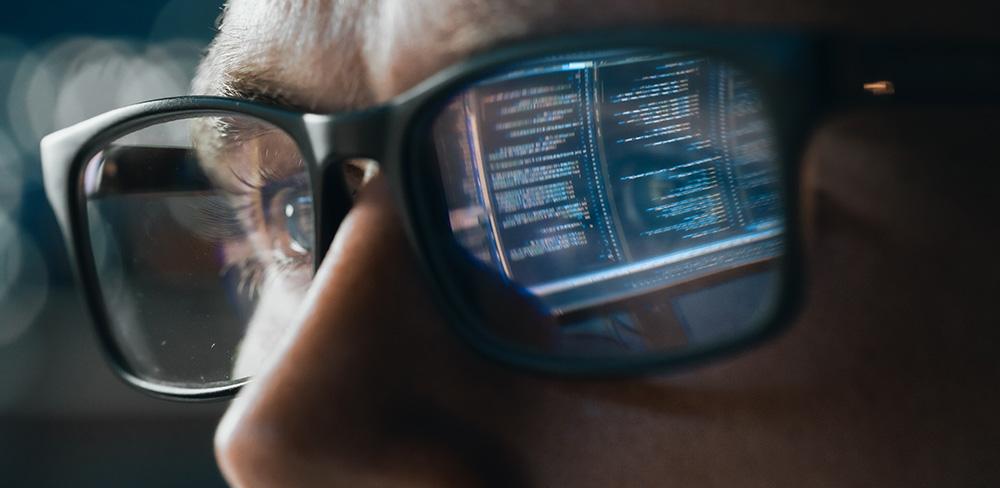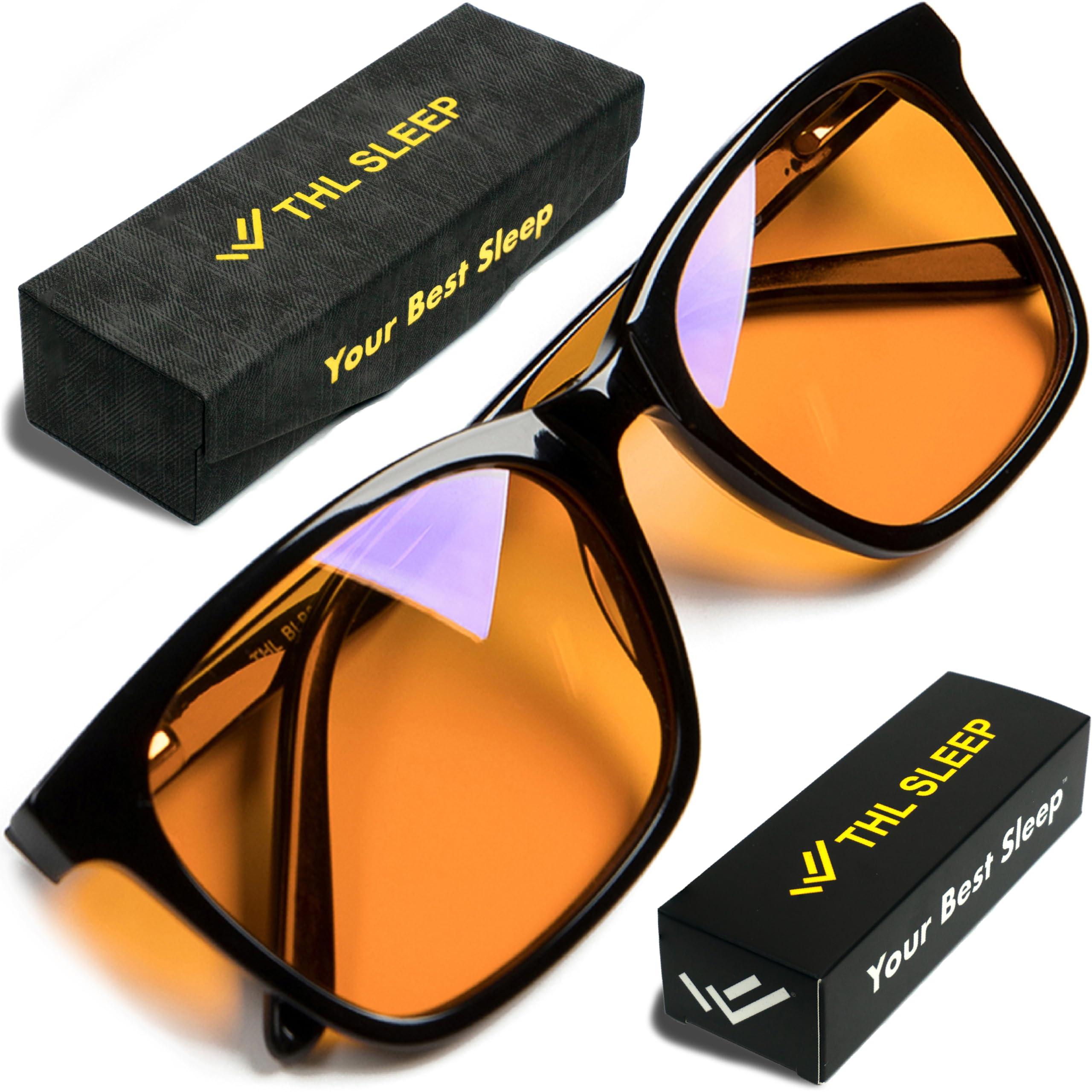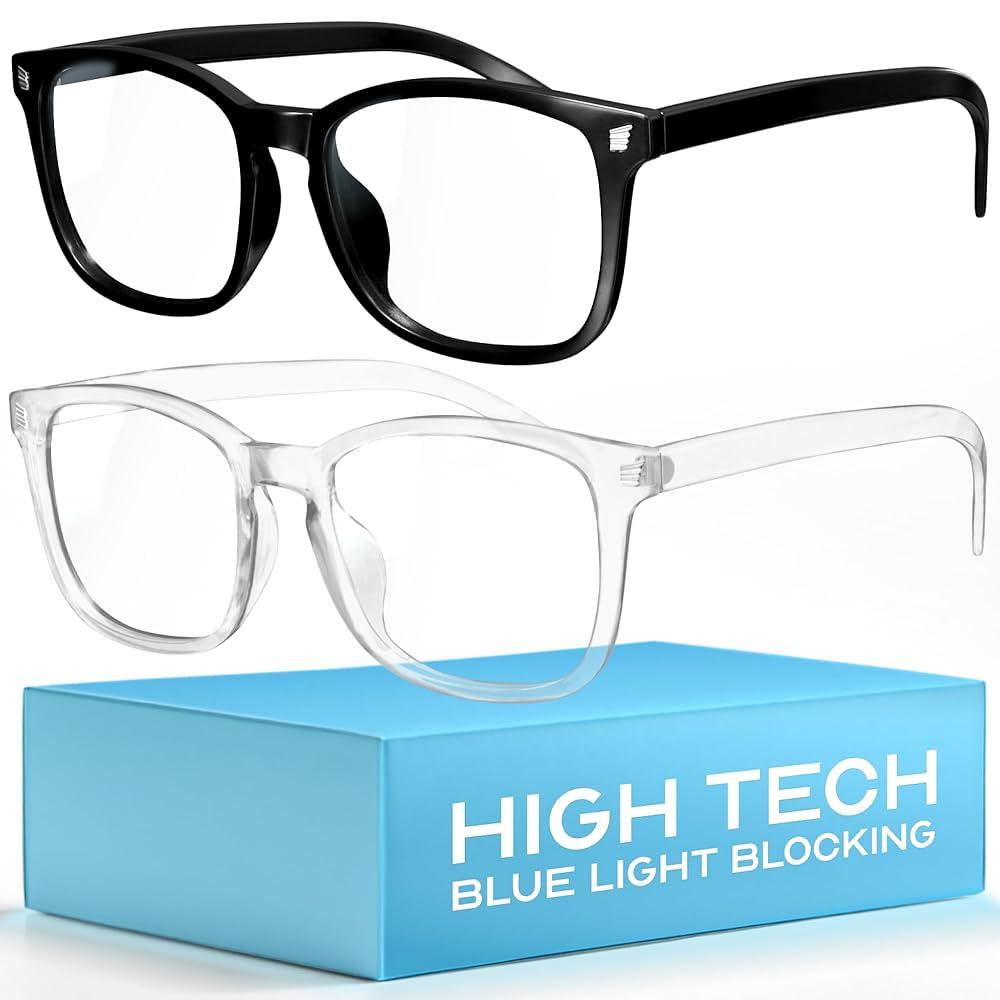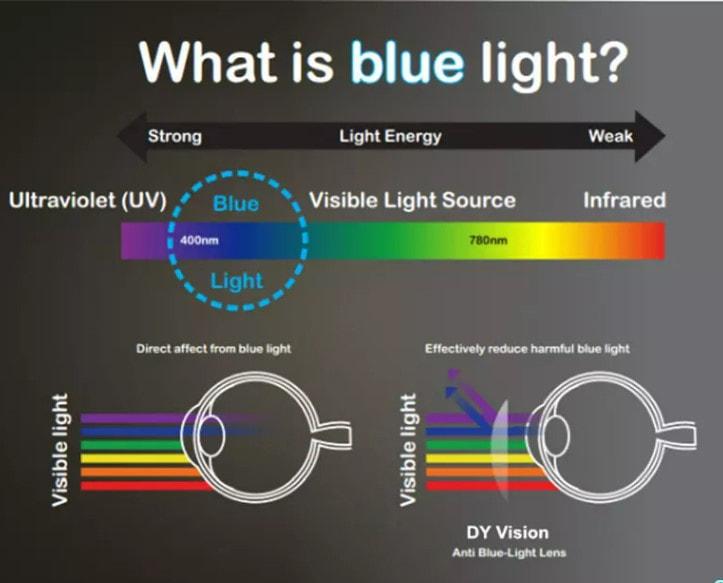As the glow of screens becomes an inseparable part of our nightly routine, a subtle but significant challenge emerges: the blue light that these devices emit. While our digital companions keep us connected and entertained long after sunset, their luminous output can quietly disrupt our natural sleep rhythms. Enter blue light blocking technology-a growing innovation designed to shield our eyes and preserve the tranquility of night. This article explores how these tools work, their benefits, and what they mean for anyone seeking a healthier relationship with their nighttime screen time.
Table of Contents
- Understanding the Impact of Blue Light on Sleep Quality
- How Blue Light Blocking Technology Works to Protect Your Eyes
- Exploring Different Types of Blue Light Filters and Glasses
- Practical Tips for Incorporating Blue Light Blocking into Your Nighttime Routine
- Evaluating the Effectiveness of Blue Light Blocking Devices: What Science Says
- Frequently Asked Questions
- The Conclusion
Understanding the Impact of Blue Light on Sleep Quality
In today’s digital age, exposure to blue light has become almost inescapable, especially after sunset. Electronic devices such as smartphones, tablets, and laptops emit significant amounts of blue light, which can interfere with the body’s natural sleep-wake cycle. This short-wavelength light inhibits the production of melatonin, the hormone responsible for regulating sleep, making it harder to fall asleep and reducing overall sleep quality.
Research has shown that even moderate exposure to blue light during the evening hours can lead to delayed sleep onset and shorter REM sleep cycles. This disruption affects not only how quickly we fall asleep but also the restorative quality of our rest. The result is a cycle of poor sleep that can impact mood, cognitive function, and overall health over time.
Key effects of blue light on sleep include:
- Suppression of melatonin secretion, delaying sleepiness
- Increased alertness when the body should be winding down
- Reduced duration of deep and REM sleep stages
- Potential long-term circadian rhythm disruptions
Understanding these impacts highlights the importance of managing blue light exposure in the evening. Simple lifestyle changes, combined with emerging blue light blocking technologies, can help preserve natural sleep patterns and improve overall restfulness.
| Blue Light Impact | Effect on Sleep |
|---|---|
| Melatonin Suppression | Delays sleep onset |
| Increased Alertness | Prevents relaxation |
| Shortened REM Sleep | Reduces sleep quality |
| Circadian Rhythm Shift | Disrupts sleep cycle |
How Blue Light Blocking Technology Works to Protect Your Eyes
At the core of blue light blocking technology lies a specialized filter designed to selectively absorb or reflect the high-energy blue wavelengths emitted by digital screens and artificial lighting. Unlike traditional lenses that block all light indiscriminately, these advanced coatings target the specific spectrum of blue light that can disrupt sleep cycles and cause eye strain. By reducing this exposure, the technology helps maintain the natural balance of light reaching your eyes.
How does this selective filtering work in practice? The lenses or screen protectors incorporate microscopic compounds that interact with blue light photons, effectively diminishing their intensity before they reach the retina. This process not only minimizes glare but also protects the delicate cells in your eyes from prolonged stress. The result is a more comfortable viewing experience, especially during nighttime hours when your eyes are more sensitive.
To better understand the benefits, consider these key effects of blue light blocking technology:
- Reduction in digital eye strain: Less flickering and glare from screens.
- Improved melatonin production: Supports healthier sleep patterns by limiting blue light interference.
- Enhanced visual comfort: Colors appear warmer and softer, reducing harshness during long screen sessions.
| Feature | Benefit | Impact on Eyes |
|---|---|---|
| Selective Blue Light Absorption | Filters harmful wavelengths | Prevents retinal fatigue |
| Anti-Reflective Coating | Reduces glare | Enhances clarity and comfort |
| Lightweight Materials | Comfort for long wear | Less pressure on nose and temples |

Exploring Different Types of Blue Light Filters and Glasses
When it comes to shielding your eyes from the harsh effects of blue light, the market offers a fascinating variety of options tailored to different preferences and needs. At the forefront are coated lenses, which feature a special anti-reflective layer that filters out blue light without altering color perception significantly. These are perfect for those who want protection without compromising the clarity of their screens.
For users seeking a more pronounced filter, amber-tinted glasses provide a deeper block of blue light by adding a warm hue to your vision. These are especially popular for nighttime use as they help signal your brain to produce melatonin, promoting better sleep. However, the trade-off is a noticeable color shift, which might not be ideal for all tasks.
Innovative tech has also led to the development of clip-on blue light filters that attach directly to existing eyewear, offering convenience without the need to purchase new glasses. Meanwhile, screen protectors with built-in blue light filtering capabilities cater to those who prefer device-based solutions and want to maintain their current eyewear style.
- Coated Lenses: Subtle, everyday use, maintains color accuracy
- Amber-Tinted Glasses: Strong protection, ideal for evening hours
- Clip-On Filters: Versatile and budget-friendly
- Screen Protectors: Device-specific, easy application
| Type | Blue Light Block % | Best For | Color Impact |
|---|---|---|---|
| Coated Lenses | 20-40% | Daytime, office work | Minimal |
| Amber-Tinted Glasses | 70-90% | Nighttime, sleep support | High |
| Clip-On Filters | 30-50% | Casual use, budget | Moderate |
| Screen Protectors | 25-60% | Mobile devices, tablets | Low to moderate |

Practical Tips for Incorporating Blue Light Blocking into Your Nighttime Routine
Start by setting a digital curfew-aim to turn off screens at least 60 minutes before bedtime. This gives your eyes a break from blue light and helps your brain prepare for sleep naturally. If work or leisure demands screen time closer to bedtime, consider installing blue light filtering software or activating the built-in night mode on your devices.
Investing in a quality pair of blue light blocking glasses can make a significant difference. Look for lenses with a subtle amber tint that won’t distort colors too much but still effectively filter out blue wavelengths. Wear them consistently during evening screen use to reduce eye strain and improve melatonin production.
- Adjust room lighting: Swap bright white bulbs for warm, dimmable LED lights to create a cozy atmosphere.
- Limit screen time: Prioritize reading physical books or listening to calming music before bed.
- Use apps wisely: Choose apps with dark mode and blue light reduction features.
| Tip | Benefit | Best Time to Use |
|---|---|---|
| Blue Light Glasses | Reduces eye strain | 1-2 hours before sleep |
| Screen Night Mode | Filters blue light | Evening screen sessions |
| Warm Room Lighting | Promotes relaxation | After sunset |
| Digital Curfew | Improves sleep quality | 1 hour before bed |

Evaluating the Effectiveness of Blue Light Blocking Devices: What Science Says
Scientific investigations into blue light blocking devices have yielded a mix of promising yet cautious results. While these devices are designed to filter out high-energy visible (HEV) blue light, primarily emitted by screens and artificial lighting, their actual impact on sleep quality and eye health varies according to study design and device quality. Some research demonstrates that wearing blue light blocking glasses in the evening can help reduce melatonin suppression, potentially leading to improved sleep onset and duration.
However, it’s essential to consider the context in which these devices are used. Blue light is not the sole factor affecting circadian rhythms; behavioral patterns such as screen time duration, brightness settings, and overall exposure to artificial light also play significant roles. Experts often emphasize the importance of a holistic approach that combines blue light blocking with good sleep hygiene practices.
- Melatonin Preservation: Several controlled trials highlight that blue light filters help maintain melatonin levels, aiding natural sleep cycles.
- Eye Strain Reduction: Anecdotal evidence suggests users experience less eye fatigue during prolonged screen use.
- Variability in Effectiveness: Device quality and individual sensitivity to blue light influence outcomes significantly.
| Study Focus | Key Findings | Implications |
|---|---|---|
| Sleep Quality | Improved sleep latency and duration in users | Supports use before bedtime |
| Eye Comfort | Reduced symptoms of digital eye strain | Beneficial for prolonged screen exposure |
| Melatonin Levels | Less suppression under blue light blocking conditions | Helps maintain natural circadian rhythm |
Frequently Asked Questions
Q: What exactly is blue light, and why does it matter at night?
A: Blue light is a high-energy visible light emitted by screens like phones, tablets, and computers. At night, exposure to blue light can trick your brain into thinking it’s daytime, which may disrupt your natural sleep cycle by suppressing melatonin production-the hormone that helps you fall asleep.
Q: How does blue light blocking technology work?
A: Blue light blocking tech filters or reduces the amount of blue light emitted from screens or ambient lighting. This can be through special coatings on glasses, screen protectors, or software that adjusts the display colors to warmer tones, helping your body’s internal clock stay on track.
Q: Are blue light blocking glasses really effective for improving sleep?
A: Many users report better sleep quality after using blue light blocking glasses, especially when worn for a couple of hours before bedtime. Scientific studies suggest these glasses can reduce melatonin suppression, but results can vary depending on individual habits and overall screen time.
Q: Can software-based solutions replace physical blue light blockers?
A: Software solutions like “night mode” or “blue light filter” apps adjust screen colors to warmer hues during evening hours. While they help, they might not block all blue light completely. Combining software filters with physical blockers like glasses can offer more comprehensive protection.
Q: Is blue light the only factor affecting sleep when using devices at night?
A: Not quite. While blue light plays a significant role, other factors like screen brightness, content stimulating your brain, and overall device usage habits also impact sleep. Mindful device use and a calming pre-sleep routine are equally important.
Q: Who should consider using blue light blocking technology?
A: Night owls, shift workers, students, and anyone who spends several hours on digital devices in the evening can benefit. It’s especially helpful for those who struggle with falling asleep or maintaining consistent sleep patterns.
Q: Are there any downsides or limitations to blue light blocking tech?
A: Some users find blue light glasses alter color perception, which can be inconvenient for activities needing color accuracy, like graphic design. Also, blue light blockers don’t replace good sleep hygiene but serve as a helpful tool within a broader sleep-friendly lifestyle.
Q: How can I integrate blue light blocking tech into my nightly routine effectively?
A: Start by wearing blue light blocking glasses or activating screen filters 2-3 hours before bedtime. Dim your lights and avoid stimulating content as you wind down. Pairing these habits with consistent sleep schedules enhances the overall benefit.
The Conclusion
As the evening shadows deepen and screens continue to glow, blue light blocking technology steps in as a gentle guardian of our nighttime rituals. By softly filtering out disruptive wavelengths, it offers a subtle yet powerful way to protect our natural rhythms without sacrificing our digital habits. Whether you’re winding down with a book on a tablet or catching up on late-night work, these tools invite a calmer transition into rest. In a world that never truly sleeps, blue light blockers remind us that sometimes, the best way forward is to embrace the night with a little more care-and a little less glare.

